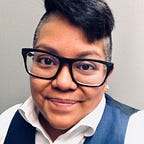Addressing Anti-Asian Violence, Racism and Xenophobia
(This letter was written to members of NASPA Region I on 3.17.2021)
Good Evening Colleagues,
I write to you tonight after hearing the news of the shootings that occurred in Atlanta, Georgia at a spa where the Asian community was targeted. Eight lives were taken during this shooting. I began to think of all our students and colleagues who are Asian/APIDA identified, waiting for us to create messages of support, who are yearning to be visible, and their pain acknowledged. My only regret is not writing this letter sooner. NASPA Region I has a lot of work to do in creating space for our APIDA community. A few thoughts on how to start this journey of reflection, together:
- Understand the history of Asian Americans in the United States. Xenophobia or fear of people from other countries/cultures has been going on for some time. From the Chinese Exclusion Act of the mid 1800’s, burning down villages related to Chinese American fishing areas, Japanese internment camps, discrimination of Vietnamese American in the 60’s and 70’s, Anti-Asian hate in the LA riots of the 90’s to the violence increased after 911. This is America, and this is not new. We have promoted Anti-Asian sentiments for some time. Covid-19 has increased Anti-Asian discrimination. For more on the history of anti-Asian American discrimination, this article may help: https://www.nbcnews.com/news/asian-america/anti-asian-violence-has-surged-u-s-covid-19-it-n125985
- Address the Model-Minority Myth. There is a generalization that Asian communities are more successful and therefore are able to reach the American dream and do not need assistance. This is not true. To be Asian in not a monolithic experience. By disaggregating data, we see some populations suffer from poverty more than others within the Asian communities. This myth also creates tension and horizontal oppression between BIPOC communities. To learn more about model-minority myth this article may help: https://www.npr.org/sections/codeswitch/2017/04/19/524571669/model-minority-myth-again-used-as-a-racial-wedge-between-asians-and-black
- Make space for healing. We are all doing our best to figure out how to be an ally, but now is not the time to ask our APIDA identified colleagues to fix the problem. Self-education is crucial. Whether reading about antiracist work, highlighting Asian authors and voices, we can often find lists that have been made by colleagues. Some examples (Thank you to my MCPHS colleagues for this list) :
- Asian Pacific Islander Desi American Therapist Directory by the American Health Collective https://www.asianmhc.org/
- Combatting Anti-Asian Racism, Harvard University https://www.gse.harvard.edu/news/uk/20/11/combatting-anti-asian-racism
- Anti-Racism Resources for the AAPI Community, Cornell University https://asianamericanstudies.cornell.edu/anti-racism-resources-aapi-community
- Toolkit for Anti-Asian Racism, information toolkit on anti-Asian Xenophobia and Racism, Seattle University https://www.seattleu.edu/diversity/resources/toolkit-for-anti-asian-racism/
I am hoping this information helps as we cannot rush to problem solve. First, we must dig deep to understand our personal biases, understand the systemic barriers, and consider what support can mean in being advocates to the APIDA community. Not addressing this violence further isolates and promotes hate towards APIDA identified folks.Region I will be unveiling more resources over time, but for now these steps hopefully highlight where we can begin the work.
In Solidarity,
Julia R. Golden
Region I Social Justice and Inclusion Coordinator
